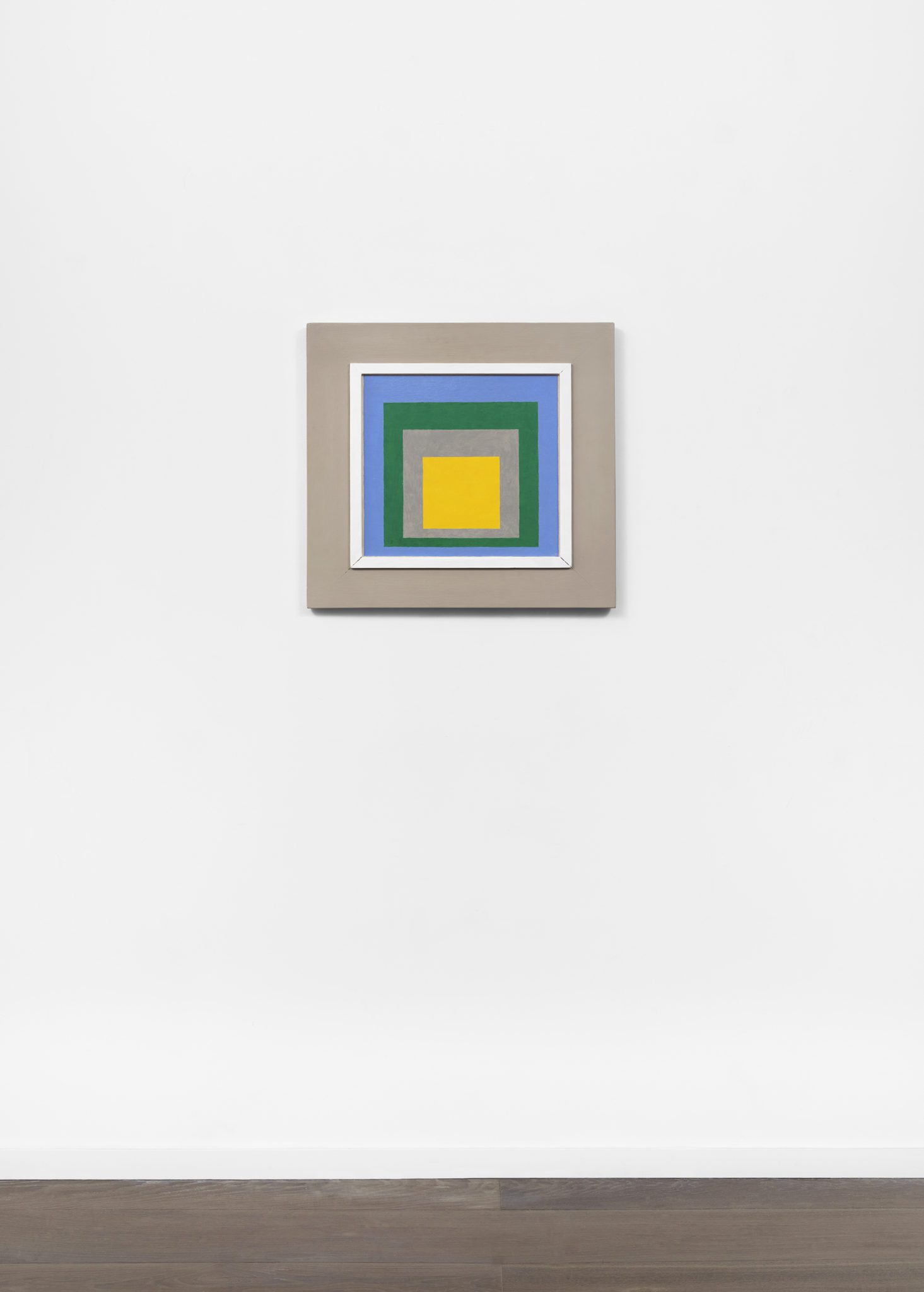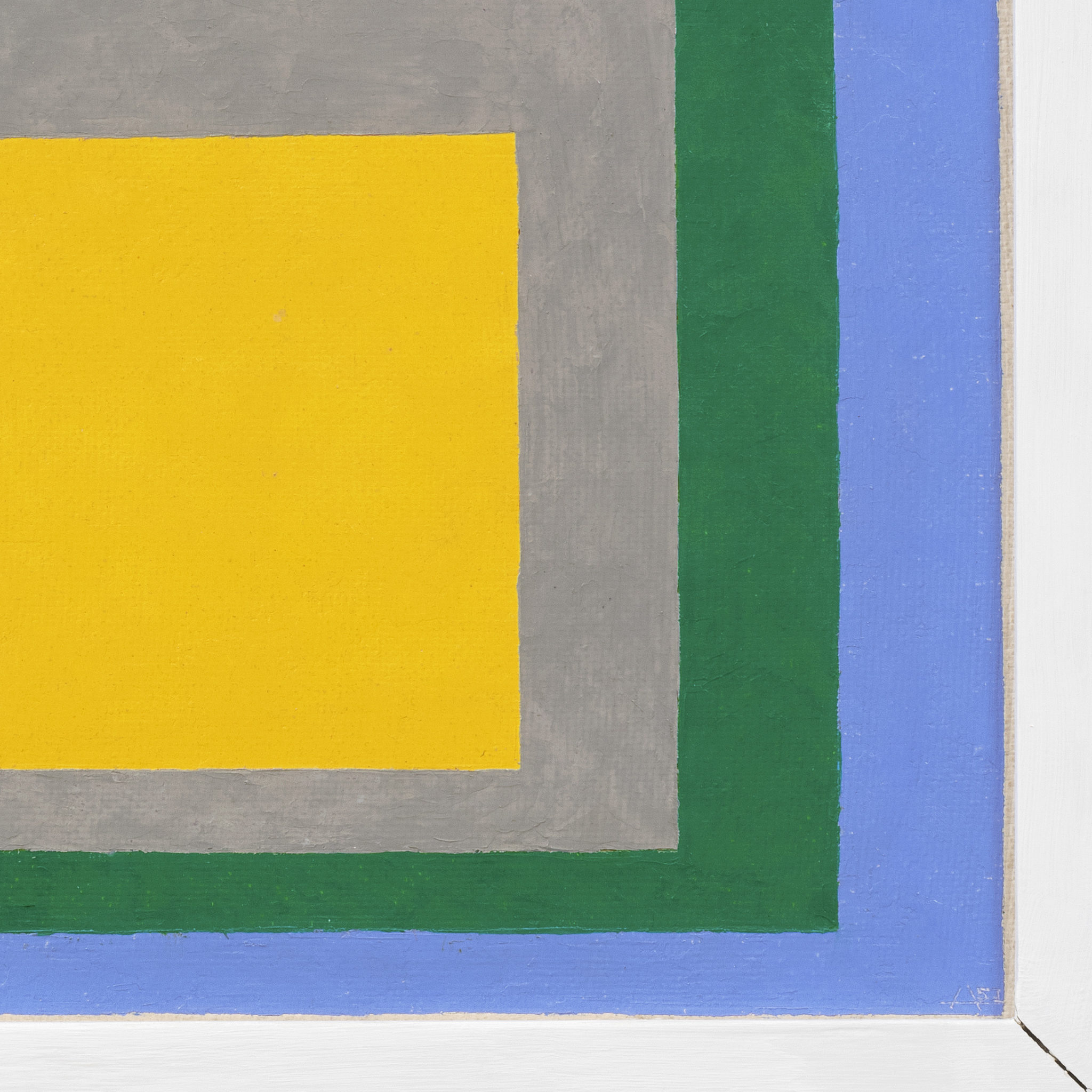Josef Albers
Homage to the Square: Open D, 1951
Oil on Masonite in artist’s own frame
22 1⁄2 x 23 inches (57.2 x 58.4 cm)
© The Josef and Anni Albers Foundation / Artists Rights Society (ARS), New York
Photo Tom Powel
I will try to speak of the beauty of shapes, and I do not mean, as most people would think, the shapes of living figures, or their imitations in paintings, but I mean straight lines and curves and the shapes made from them…These are not beautiful for any particular reason or purpose…but are always by their very nature beautiful and give a pleasure of their own.
–Josef Albers to Nicholas Fox Weber, quoted in Minimal Means, Maximum Effect in Josef Albers: No Tricks, No Twinkling of the Eyes, exh. cat., Oslo: Henie Onstad Kunstsenter, 2014, p. 14.
A pioneer of the Bauhaus in Germany, Josef Albers began his Homage to the Square series in 1950; throughout his career—both as a teacher and as an artist—he explored the possibilities of abstraction, eventually becoming transfixed by the potential inherent in the purely optical effects of form and color. These paintings, which Albers continued to produce until 1976, represent a culmination of his rigorous chromatic experiments. In each Homage painting, Albers’s careful juxtaposition of specific pigments results in new and often surprising visual impressions that ultimately alter the viewers’ perception of the individual hues. Indeed, the artist’s understanding of aesthetics is perfectly encapsulated by the above quote, which he used in his teaching for many years.
Whenever he finished a painting, Albers would record what he referred to as the “recipe” of the painting—the hue, quantity, type, and even sometimes the factory maker of each pigment—on the back of the Masonite board.



